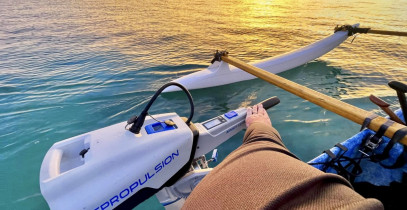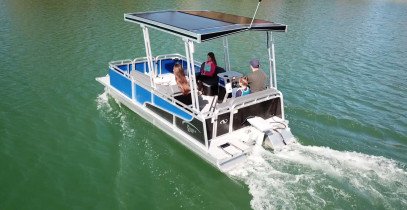
Outboard Motor Height Guide: Diagrams & Height Adjustment Tips
Correct outboard motor height is crucial as it affects the stern lift, drag, porpoising, quality of water fed to the prop, and thus optimal performance on your boat.
If you want higher efficiency, better fuel economy, and some extra miles per hour at the top speed, be sure to set the outboard motor height on the transom correctly.
However, how high should an outboard be mounted (on a bass boat, pontoon, etc)? What's the best position for an outboard motor?
In this post, I will introduce some easy ways to find the best outboard motor height, typical signs that your outboard is too high/low, and practical tips to adjust the outboard motor height on the transom if needed.
Editor's Note: The outboard motor shaft length also matters in setting the outboard motor height correctly. Click to learn how to select the right shaft length for your boat.
Table of content:
- Best Outboard Motor Height (with Diagram)
- Signs Your Outboard Is Too High/Low
- Outboard Motor Height Adjustment
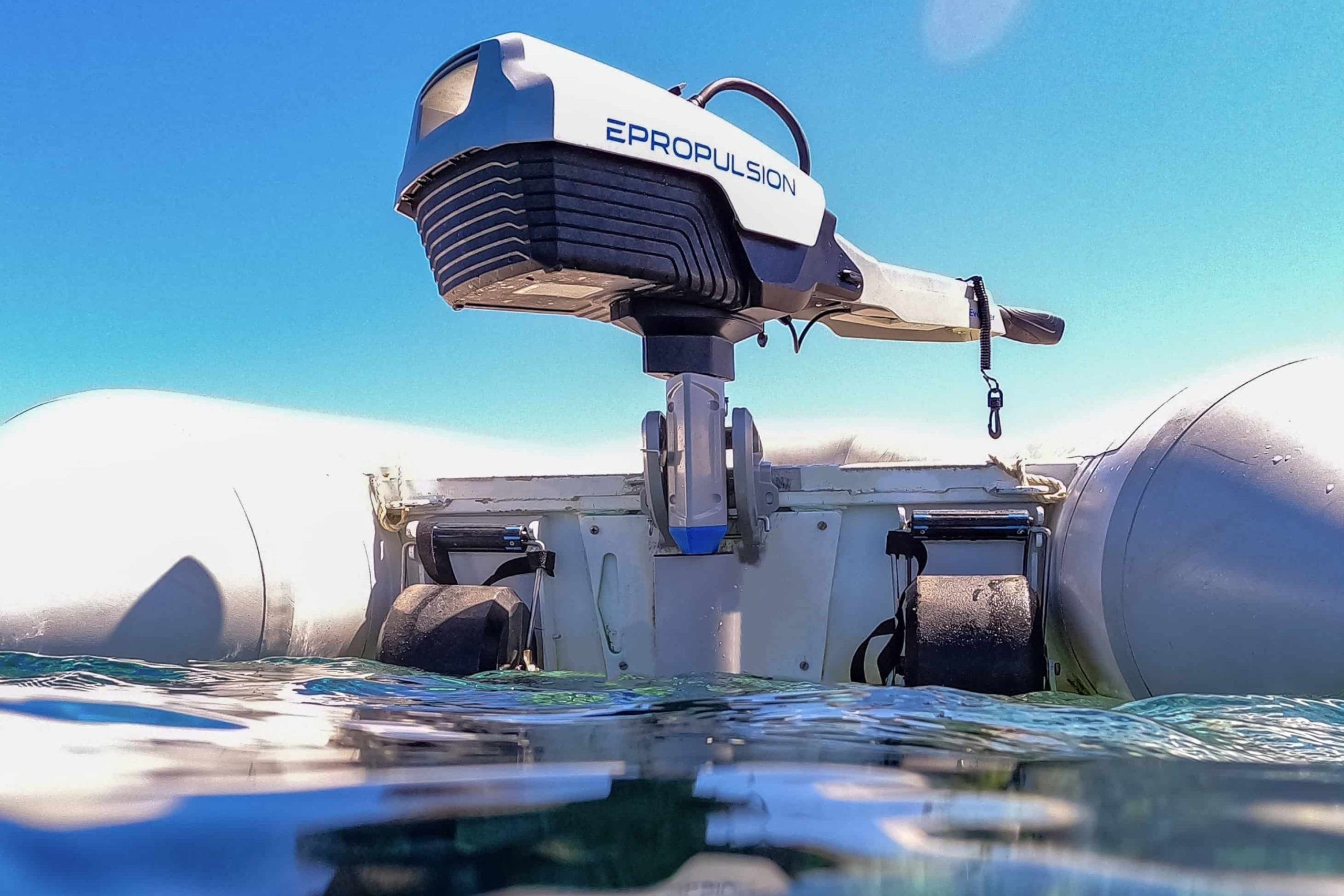
Proper Height for Outboard Motor
How do you determine the outboard motor height on a pontoon (bass boat, or any other type)?
Actually, setting the correct outboard motor height is easy if you remember some simple rules.
The rule of thumb is that the cavitation plate should be about even with the keel right in front of it, and the prop shaft should be trimmed to parallel to the keel.
See the cavitation plate outboard motor height diagrams to get a more straightforward understanding of the proper height:
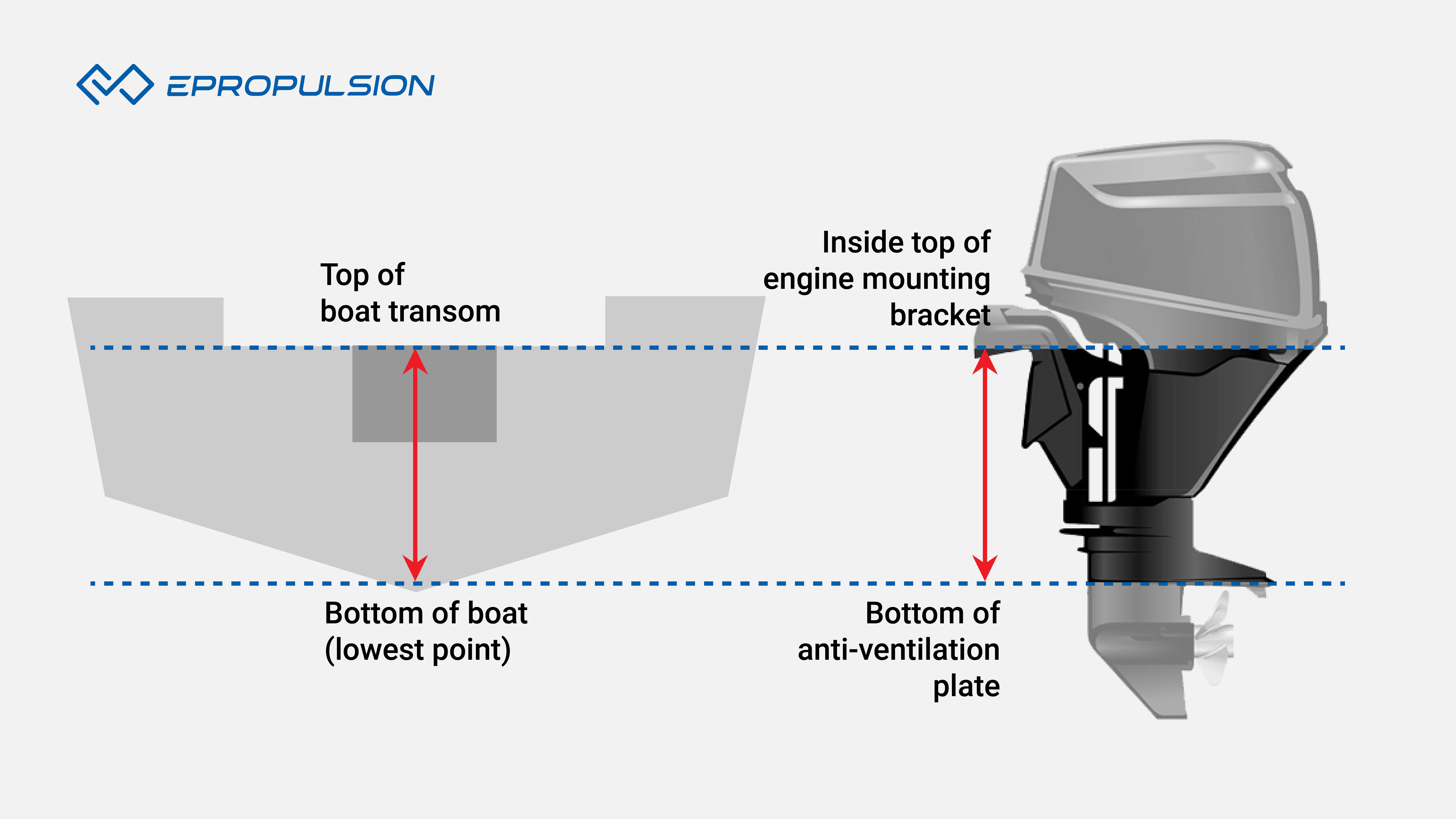
If you are running an outboard motor without a cavitation plate (as most electric outboards are designed to be), the outboard motor height is decided differently where the top of the propeller should be kept 100 mm to 150 mm below the water.
Check the outboard motor height diagram below to see the difference:
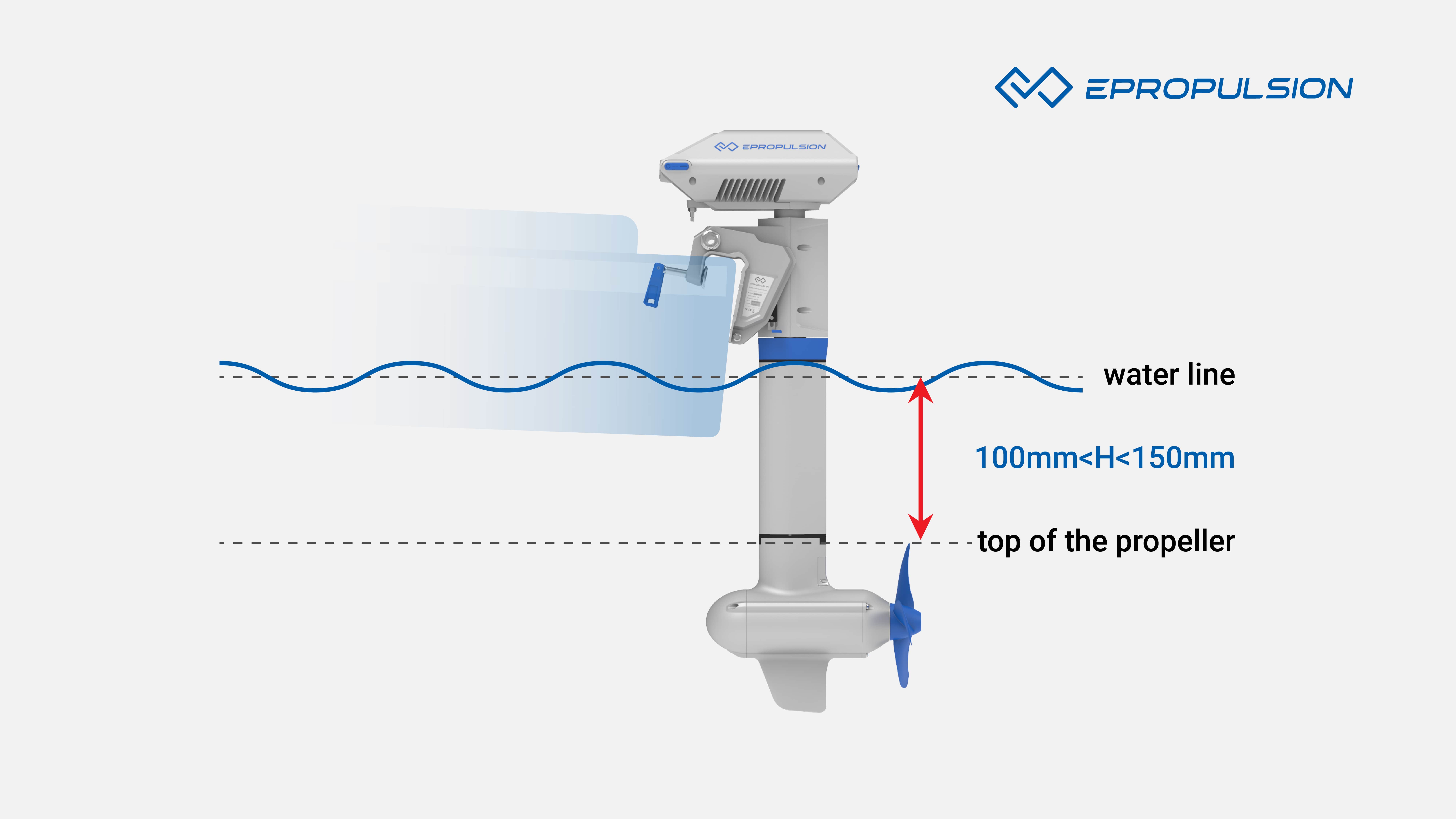
The outboard motor height diagrams provide an industry standard that can serve as a starting point to set the outboard motor height on the transom correctly.
Sometimes, mounting the outboard motor higher/lower can produce better total performance depending on your specific applications. Check the diagram below to see if you need to adjust the outboard motor height:

Other major variables that affect your optimal outboard motor height include the prop. For example, you will need a prop with heavier cup or more blades to increase grab and thus run your motor efficiently at a higher mounting height.
The best way to find out the ideal outboard motor height on the transom is by trial and error.
Load the boat for your typical day, run it, and trim it up to where you usually would for your conditions. Operate it, including turns, and look at the anti-ventilation plate while running:
On plane with proper outboard motor height and trim, the AV plate should be slightly above or at the water level. Visible and being splashed with water, not buried.
If you blow out too much, you’ll need to drop it down a hole. Continue reading for more signs that indicate your outboard motor is too high (or low).
Signs Your Outboard Is Mounted Too High/Low
Oftentimes, I see people's outboard set at the wrong height, which limits the boat's optimal operation.
So should you raise or lower your outboard? How do you know if your outboard is too high/low?
Generally speaking, with the proper outboard motor height, you should be able to see the AV plate being splashed with water while running. Otherwise, your outboard might be mounted too high or too low.
Checking out some typical signs that tell the outboard is mounted too high/low can help you quickly identify the outboard motor height issues:
Symptoms of outboard mounted too low:
- Sluggish speeds
- Poor maneuverability
- Lacking RPMs
- Excessive drag
- Boat porpoising
- Water pushing up into the cowling
Symptoms of outboard mounted too high:
- Prop blowing out while turning
- Propeller tends to ventilate
- Less drag & low water pressure
- Lacking thrust
- Motor overheat & internal damage
- Too much noise from the motor
The only true way of knowing is to run a test to see if your outboard motor is set at its best height. Listen to how your outboard runs through the water, look at your engine's RPM vs boat speed, and notice what the water/wake looks like behind the boat and outboard.
The symptoms listed above are commonly seen when the outboard motor height is overly high/low, but they are not precise indicators and can only be used as a clue to guide you to the right height.
If you are still not sure about whether your outboard transom height is correct, feel free to comment with a picture of your current setup and any signs you observed in operation so we can discuss the best solution to help you get the ideal outboard mounting height for your boat.
Outboard Motor Height Adjustment
How do you adjust the height of an outboard motor?
It's highly possible that you find your outboard transom height inappropriate after the test ride and want to raise the motor for better performance and better fuel efficiency.
Thankfully, adjusting the outboard motor height can be easily done by simply switching the mounting holes.
Usually, the outboard motor features a clamp bracket that allows you to adjust the outboard motor height to a higher level than standard. There are a series of four to six holes with a spacing of 0.75''.
Otherwise, you can use a Jack plate to fine-tune the outboard mounting height.
Tip: A cherry picker (engine hoist) can save a lot of effort in the task, especially if you own a heavy motor.
There are a lot of video tutorials on adjusting the outboard mounting height. Click to check the steps to adjust the height setup on a Suzuki outboard using a cherry picker.
Further Reading: If you are new to the outboard or inexperienced at mounting an outboard motor, you may want to check our previous guide on how to install an outboard motor and controls.




